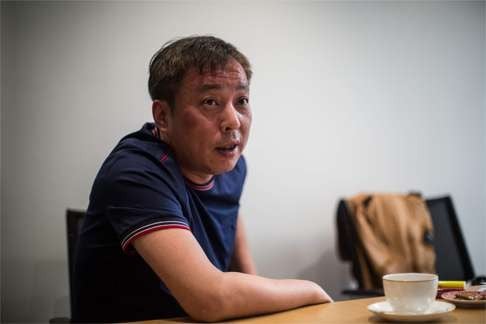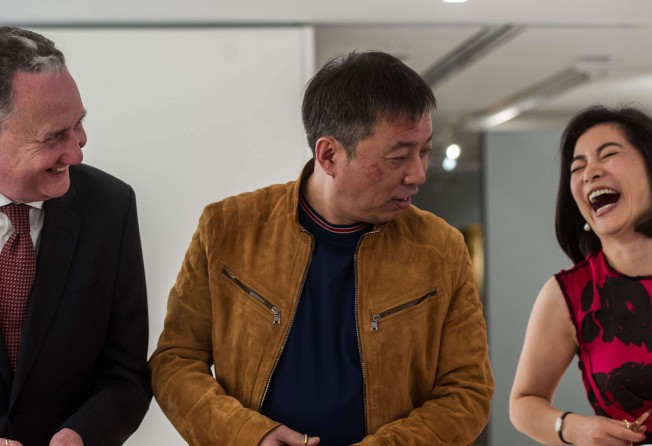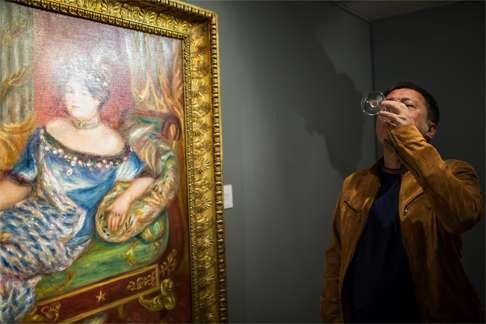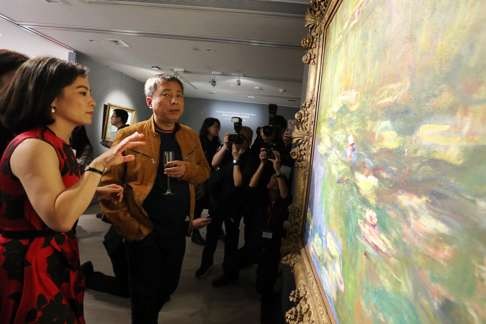
Chinese tycoon Liu Yiqian says he wants to add more Western art to his shopping list
The former taxi driver, whose personal wealth is put at US$1.38 billion, says it is his ‘social responsibility’ to show such art to the mainland’s younger generation

Former Chinese taxi driver-turned tycoon Liu Yiqian first stunned the auction world by snapping up hugely expensive Chinese antiquities, but he is targeting Western masterpieces.
He says it is his “social responsibility” to show them to the mainland’s younger generation.
Liu has become China’s highest profile art collector, hitting headlines with record-breaking buys and an irreverent approach.

The world is globalised ... our collection is mainly Chinese traditional works of art, [but] we are going to expand into Western and Asian works
However, in a departure from his Chinese collecting spree, last year Liu splashed out on Modigliani’s Nu Couche or “Reclining Nude” for more than US$170 million at Christie’s, the second highest price ever paid at auction for a work of art.
Liu has said he hopes the museum he founded in Shanghai, the Long Museum, where much of his collection is on display across two branches, will increasingly become a showcase for Western art as well as Chinese classics.
The Modigliani is due to go on show at the museum next year.
“The world is globalised ... our collection is mainly Chinese traditional works of art, [but] we are going to expand into Western and Asian works,” he said, during a recent interview at Christie’s regional headquarters in Hong Kong.
“I hope in my life time I can collect more from both China and the West.”

I hope top Western works of art can be exhibited in Shanghai or in our country. I think it’s something someone has to do ... it’s cultural exchange
“Other than Chinese traditional and contemporary works of art, younger generations in China have developed deeper recognition of Western works,” he said as he relaxed in an armchair and talked through a haze of cigarette smoke after cutting the ribbon at a preview ahead of Christie’s spring sales in May.
“I hope top Western works of art can be exhibited in Shanghai or in our country. I think it’s something someone has to do ... it’s cultural exchange.”
With a personal wealth of US$1.38 billion according to Forbes magazine, Liu is among the ranks of the new Chinese super-rich.
Having made his fortune in real estate and finance in the 1990s, he now runs a huge conglomerate across several industries from chemicals to investments.
Liu’s auction buys have not been without controversy – his US$8.2 million purchase of an “ancient” scroll of nine Chinese characters was derided as a fake by a group of respected Chinese experts, but he brushed off the scepticism.

“I wasn’t showing off,” he said as he drank, this time, from an ordinary tea cup.
“I was just being myself.”
While he is eyeing Western works, Liu is also still snapping up Chinese pieces.
In April he bought a painting by Chinese master Zhang Daqian for US$35.93 million at Sotheby’s – a new record for the artist at auction.
Liu has said before that his moves to buy up Chinese antiquities are part of a bid to bring heritage back to the mainland.
He paid a record US$45 million in 2014 for a 15th-century Tibetan “thangka” tapestry at a Christie’s auction.
Beijing has ruled Tibet since 1951, a year after invading, and considers the Himalayan region an integral part of its territory. The Tibetan government in exile and some scholars dispute China’s historical claims.
“We should not be obsessed with how these things [Chinese antiquities] spread overseas,” Liu said.
“It doesn’t matter where they are. The most important thing is for them to be preserved.”